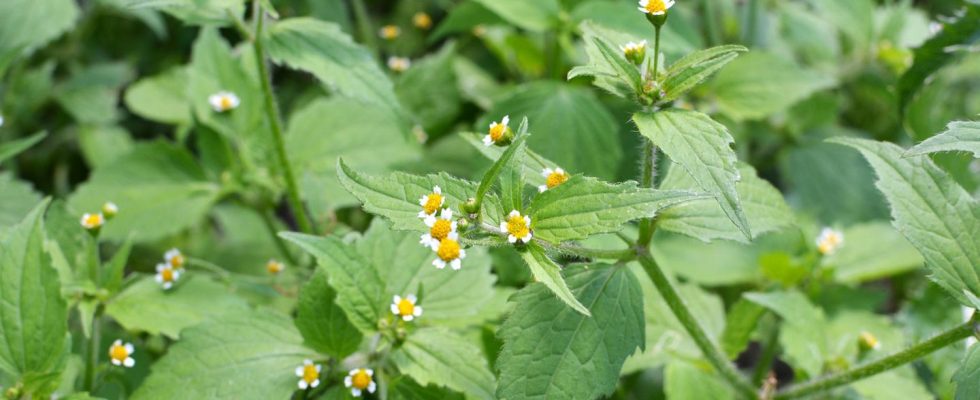Invasive species
Wild vegetables: Why the French herb is annoying but also useful
French herb is also known as “small-flowered button herb”.
© Orest Lyzhechka/Getty Images
The Nature Conservation Association of Germany couldn’t have put it more aptly: “If you want to fight it, it’s annoying, if you use it, you can hardly get enough of it”: The French herb is a thorn in the side of many hobby gardeners – and so are wild vegetables many positive qualities.
The French herb is a neophyte: this is the name given to plants that were (un)consciously introduced by humans. The wild vegetables are of no great use to most insects and – due to their rapid spread – are not a welcome guest in many gardens. The stubborn weed also has a benefit: It contains many healthy vitamins and minerals. Below we will tell you how you can best process the small-flowered button herb and whether the French who give it its name are really to blame for the plant being so widespread in this country.
History: This is how the weed got its name
If the invasive plant species had been named after its origin, it should actually have been called South American weed. In fact, the small-flowered button herb does not come from France, as the name suggests – but why is the plant still called that? There are several theories about it, one of which is that the Napoleonic Wars are related to the French herb. Both the invading troops, which have spread as quickly as the weeds, and the buttons on the soldiers’ uniforms, which are said to resemble the flowers of the weeds, could be the reason for the derogatory name. The term small-flowered buttonwort is therefore used more frequently among botanists.
That’s why French herb is so unpopular
After the plant spread throughout Europe, it quickly became a pest. French herb has little demands on its environment and grows in sunny locations with sandy loam soil as well as in partially shaded places – i.e. in the field, in the vegetable patch or on the side of the road. For farmers who grow sugar beets or potatoes, the weeds are a real nuisance. But even (hobby) gardeners are usually not happy when the invasive species spreads without being asked and thus forms up to three generations in a row every season. And in doing so, it also steals growth-promoting nutrients from other flowers and plants.
Since the French herb blooms between June and October and during this time its seeds are scattered, which – when lightly pressed – immediately form new plants, hobby gardeners must always be on the lookout: In order to keep the light and heat germinators in check It is best to remove the neophyte from the ground before flowering, including its roots, and dispose of it with household waste (not in the compost). Or you can simply process the tasty leaves further. French herb can also be used as livestock feed or nitrogen-rich compost. Because the plant has great benefits for humans and animals. Read the next paragraph to find out why this is the case and how you can best eat the invasive species.
This is how you can use the wild vegetables
Before you dispose of the weeds, you should know that the leaves of wild vegetables in particular contain many vitamins and minerals such as calcium, magnesium, vitamins A and C. “With 14 milligrams of iron per hundred grams, French herb is the leader among the edible plants growing here. Only exotic plants such as ginger, turmeric or cumin have higher levels,” explains NABU. But the stems and flowers are also suitable for consumption and can be used (together with the leaves) in the kitchen: whether raw in a wild herb salad, as a pesto, a spinach substitute or in the form of a green smoothie – all kinds of tasty things can be made from the French herb conjure up healthy dishes. The plant is therefore a real superfood. And one more tip at the end: Even the seeds can be used to press oil.
Sources: NABU, My beautiful garden
You might also be interested in:
This article contains so-called affiliate links. Further information are available here.


